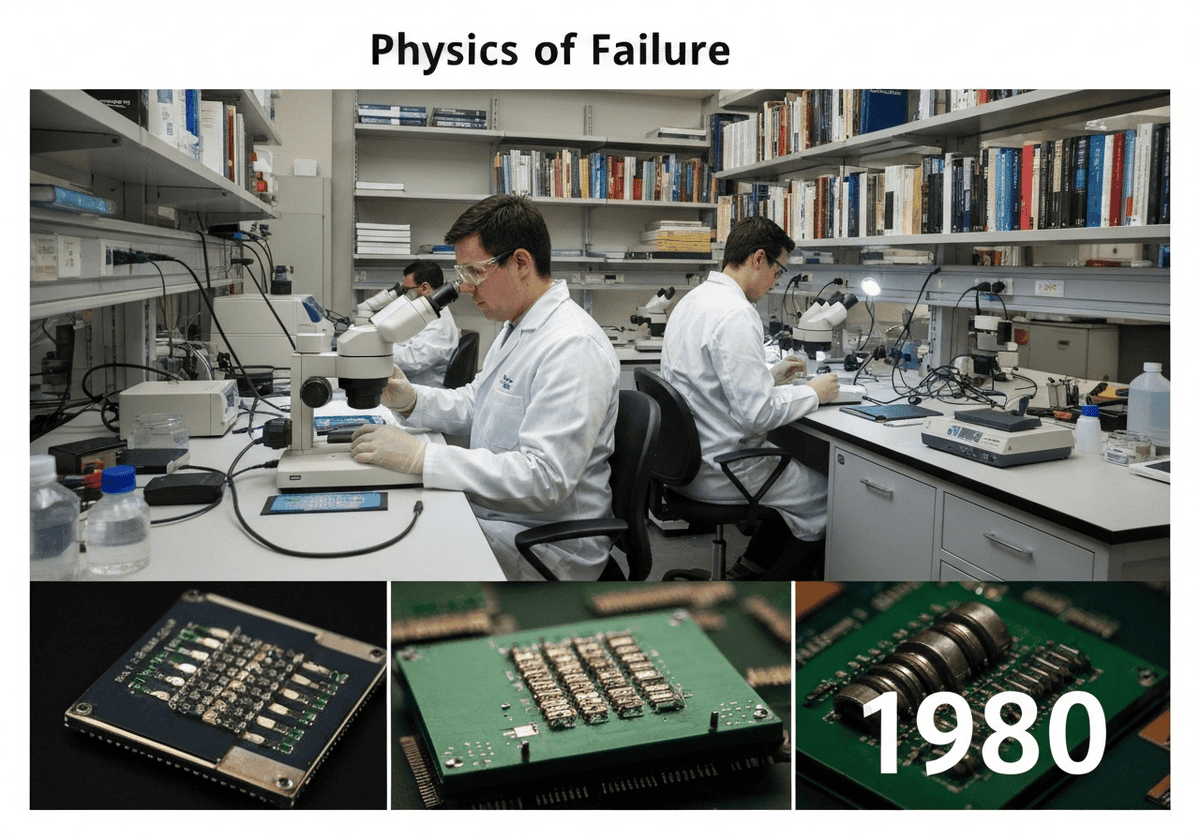失效物理学(PoF)是一种可靠性工程方法,它利用材料科学和物理学知识来理解失效的根本原因机制并建立模型。它不单纯依赖过去故障的统计数据,而是通过分析导致退化和故障的物理过程(如疲劳、腐蚀、蠕变)来预测故障。


(generate image for illustration only)
失效物理学(PoF)是一种可靠性工程方法,它利用材料科学和物理学知识来理解失效的根本原因机制并建立模型。它不单纯依赖过去故障的统计数据,而是通过分析导致退化和故障的物理过程(如疲劳、腐蚀、蠕变)来预测故障。
The Physics of Failure approach represents a shift from the empirical, statistical methods (like relying on MTBF from handbooks) to a more science-based, deterministic methodology. The core idea is to prevent failures at the design stage by understanding how the stresses of manufacturing, shipping, and operation interact with the materials and geometry of a component to initiate and propagate failure mechanisms.
Key activities in a PoF analysis include: identifying potential failure mechanisms and sites, creating a load profile (thermal, mechanical, electrical, chemical stresses), and using mathematical models to predict the time to failure. For example, Coffin-Manson models can be used to predict low-cycle fatigue life under thermal cycling, while Arrhenius models can predict the acceleration of chemical degradation processes with temperature.
This approach is particularly valuable for new technologies or applications where historical failure data is unavailable. By focusing on the fundamental science, engineers can design for reliability, select appropriate materials, and define realistic testing protocols that target specific failure mechanisms, leading to more robust and durable products without the need for extensive trial-and-error testing.
迎接新挑战
机械工程师、项目、工艺工程师或研发经理
可在短时间内接受新的挑战。
通过 LinkedIn 联系我
塑料金属电子集成、成本设计、GMP、人体工程学、中高容量设备和耗材、精益制造、受监管行业、CE 和 FDA、CAD、Solidworks、精益西格玛黑带、医疗 ISO 13485
故障物理学(PoF)
(如果日期不详或不相关,例如 "流体力学",则对其显著出现的时间作了四舍五入的估计)。
相关发明、创新和技术原理
{{标题}}
{%,如果摘录 %}{{ 摘录 | truncatewords:55 }}
{% endif %}